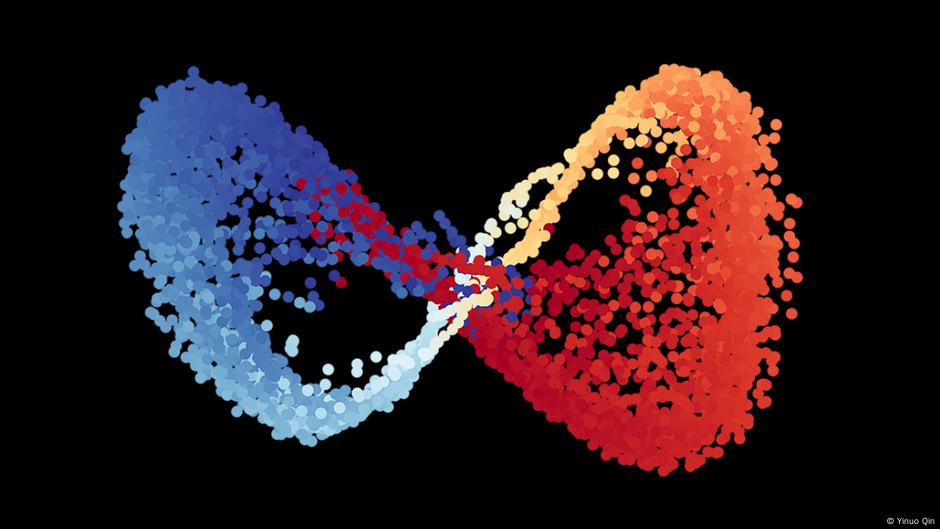A New AI Program Could Have Discovered Alternatives to Physics | Science and Ecology | Dr..

Our physics depends on variables. For example, energy, mass, velocity, the three variables that make up Einstein’s iconic equation E = MC2. Without these variables, not even Einstein could discover relativity, so robotics at Columbia University of Engineering wondered: How did Einstein know these concepts in the first place? Can these variables be detected automatically?
According to the researchers, if possible, such a possibility would significantly speed up the processes of scientific discovery. And what might be even more surprising: According to their new study, Posted in natural computational sciences, The variables we are familiar with may not be the only ones. How is this possible?
Wrong set of variables
He said, “I’ve always wondered, if we ever met an intelligent alien race, would they have discovered the same physical laws as us, or could they describe the universe differently?” It’s a statement Hood Lipson, lead author of the study and director of the Creative Machines Laboratory in Columbia University’s Department of Mechanical Engineering, where the work was primarily carried out.
“Some phenomena may seem confusingly complex because we are trying to understand them using the wrong set of variables,” he added.
New artificial intelligence algorithm
To see if this is possible, scientists have developed a new artificial intelligence algorithm to try to find a way. Thus, the scientists trained the AI system to calculate the number of variables needed to describe physical systems and predict their evolution.
The goal of the program was to use a video camera to observe and observe physical phenomena before attempting to identify the smallest possible set of fundamental variables that could adequately capture the observed dynamics.
as described Columbia University press release, The researchers began providing the system with raw videos of phenomena they already knew the answer to.
For example, they presented a video of a double pendulum known to have exactly four “state variables”: the angle and the angular velocity of each of the arms. After a few hours of analysis, the AI gave the answer: 4.7 variables.
“We thought that answer was close enough,” Lipson said. “Especially because the only thing AI can access is raw video footage, without any knowledge of physics or engineering. But we wanted to know what the variables really were, not just how many,” he added.
unknown variables
For this reason, the researchers then began visualizing the actual variables that the program had detected. Since the algorithm cannot express the variables in an intuitive language accessible to humans, extracting the variables themselves was difficult.
After a major investigation, it turned out that two of the computer-defined variables match the angles of the arms, but the other two variables are still unknown.
Dr. Puyuan Chen, currently an associate professor at Duke University, who led the study. an experience. “But it seems that there is nothing quite alike,” he added.
During the experiment, the authors went on to demonstrate more complex dynamic computer systems, such as an “air dancer” swaying in front of a used car dealer, a lava lamp, and a fireplace flame. They report that eight case variables, eight and 24 case variables, respectively, are needed to describe these systems, but what these are until now is unknown.
“We still don’t understand the mathematical language he speaks,” Boyuan Chen explained.
There are alternative ways to describe the universe
A particularly interesting question for the team was whether the set of variables was unique to each system, or whether a different set was produced each time the program was restarted. As the scientists explained, in the experiments, the number of variables was the same each time the AI was restarted, but the specific variables were different each time. So yes, depending on the release, there are alternative ways to describe the universe and our choices may not be perfect.
After all, what today seems obvious or absolute may not be so. “It has taken civilizations thousands of years to formalize basic mechanical variables such as mass, momentum and acceleration,” Lipson said. “Once these concepts are formalized the laws of mechanical motion can be discovered.”
Likewise, the laws of thermodynamics cannot be derived and formalized without the formal concepts of temperature, energy and entropy, some of which are now self-evident to us, but which were not so to our ancestors.
The future of ‘alternative’ physics
Researchers believe this type of AI could help scientists discover complex phenomena whose theoretical understanding doesn’t keep pace with the flow of data, in fields ranging from biology to cosmology.
“Although we used video data in this work, any type of matrix data source can be used: radar arrays or DNA arrays, for example,” explains Kuang Huang, co-author of the research paper.
Variables, precursors to any theory
For his part, Lipson argues that the lack of an appropriate set of variables to define many events may cause them to be misinterpreted or underestimated.
“For thousands of years, people have known that objects move quickly or slowly, but only when the concept of velocity and acceleration was formally defined, Newton was able to discover his famous F = MA law of motion,” explained Lipson.
These variables are, crucially, a precursor to any theory. Qiang Du, the mathematics professor who co-led the work asked, “What other laws are we missing just because we don’t have the variables?”
Edited by Felipe Espinosa Wang.

“Award-winning zombie scholar. Music practitioner. Food expert. Troublemaker.”


/cloudfront-eu-central-1.images.arcpublishing.com/prisa/AHVYMMDSTZDTDBFNZ3LMFUOKNE.jpg)








